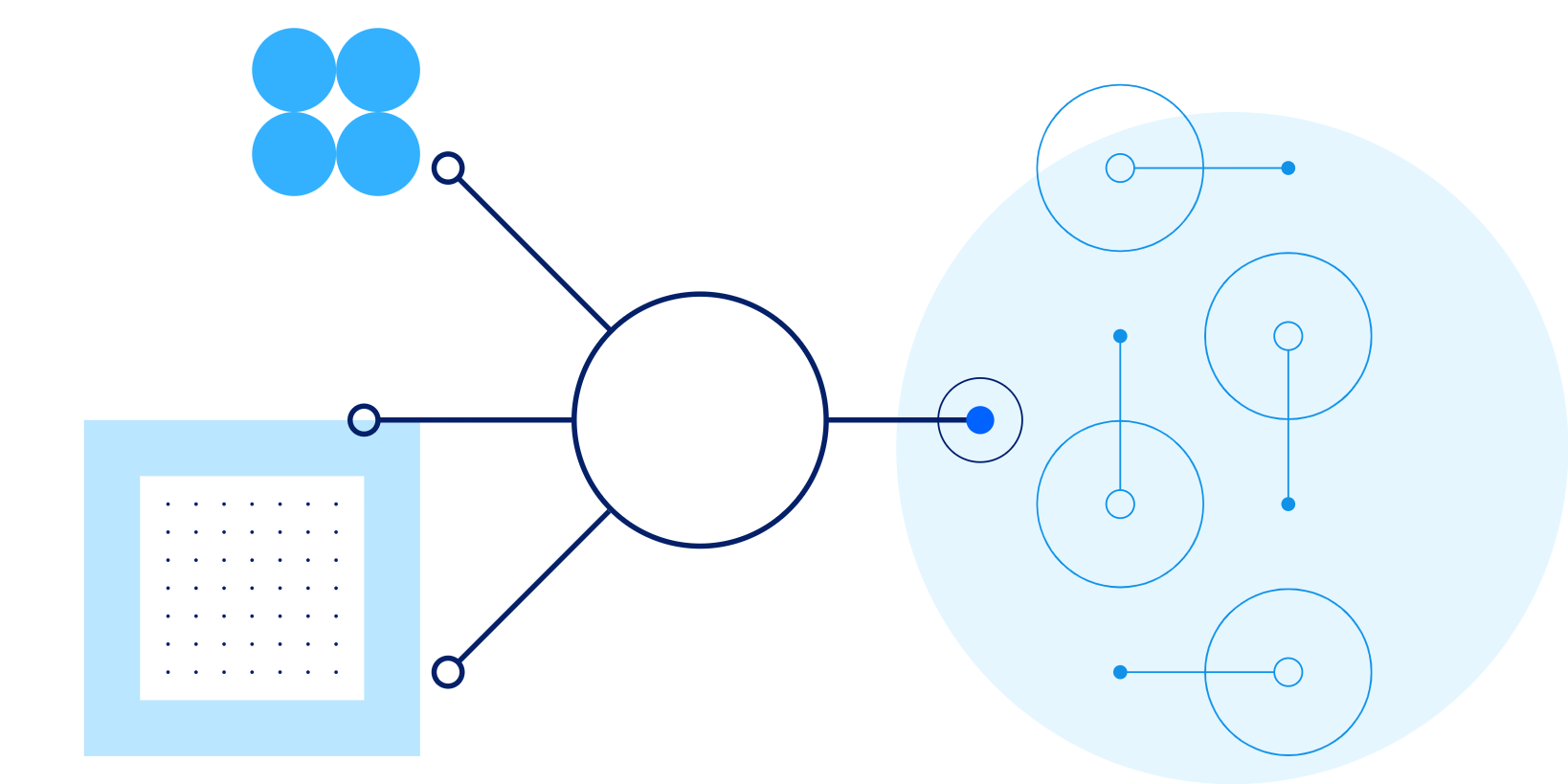About cookies on this site Our websites require some cookies to function properly (required). In addition, other cookies may be used with your consent to analyze site usage, improve the user experience and for advertising. For more information, please review your options. By visiting our website, you agree to our processing of information as described in IBM’sprivacy statement. To provide a smooth navigation, your cookie preferences will be shared across the IBM web domains listed here.
Perspectives
How Enterprise Application Management can help businesses meet strategic goals.
1 July, 2020 | Written by: Nick Davis
Categorized: Perspectives
Share this post:
Having been involved in creating solutions for cloud-based resources for the past 10 years, I’m still surprised to see many companies struggling to use cloud to deliver business results. Now that the low-risk applications have moved and the “born-in-the-cloud” are in their natural home, what about the rest? Where should the harder enterprise applications reside? Here’s where Enterprise Application Management can help.
Before we get into precisely how, it’s important to correctly define the cloud and hosted services. In truth, cloud and hosted services are very similar – both are off-premises and are accessed through an internet connection. While some believe that these services are essentially the same, experts argue that cloud services are more interrelated with other web-based offerings. When it comes down to it, the main difference between the two services is multi-tenancy.
Multi-tenancy
Multi-tenancy implements the sharing of resources and costs among a large pool of users and allows infrastructure to be concentrated in locations with lower costs. This maximises peak-load capacity and improves utilisation and efficiency in systems that are often only used up to 10 to 20% of the time. Hosted services generally do not offer the same cost efficiencies, elasticity, or reliability as cloud services. The benefits for the cloud provider are amplified by only having to support a single version of software, the uniformity of its hardware environment, and its efficiency. The general rule is that if a solution is not multi-tenant, then it isn’t a cloud solution and won’t have the same benefits.
Hosted services
Hosted services, on the other hand, are technology services offered by a provider hosting physical servers that are removed from the customer’s premises. A hosted service provider owns and oversees infrastructure, software, and administrative tasks at a private location. The system is available to clients, typically through a direct network connection that uses the internet (VPN, remote desktop etc). There are three main elements of this service: Software as a Service (SaaS), Platform as a Service (PaaS), and Infrastructure as a Service (IaaS). These three combined encompass software, network capacity, and the equipment used to support operations such as storage, hardware, servers, and networking components.
Cloud services
Cloud services are a subset of hosted services. Hosted services, even those accessible using the internet, can’t be referred to as real cloud solutions unless they have been built to capitalise on the collaboration and interconnectivity that’s a fundamental part of the cloud. Cloud applications are web-enabled, meaning instead of being based on physical hardware, they’re based in a shared virtual environment managed by a cloud-hosting provider. Only server installation and a device with an internet connection are needed. Many line-of-business applications are adding this functionality to their offering. Cloud servers can be constructed to provide varying levels of performance, security and control to configure to your business’s needs.
Cloud servers allow your business to optimise IT performance without the overwhelming costs associated with the purchase and management of fully dedicated infrastructure. These servers are the ideal fit for businesses of variable demands and workloads. Cloud services offer on-demand utilities, multi-tenancy features with seamless uninterrupted scaling, and features that are sure to meet your business’s needs to adapt and help you meet the demands of your client base.
How Enterprise Application Management can help deliver business results
Companies are in a quandary – how to get the advantages of cloud (agility and consumption-based pricing) while retaining the benefits and peace of mind of the hosted environment. All too often clients are not in a position to transform their enterprise applications to run in a SaaS environment, mainly due to time and budgetary constraints.
Cloud-managed services include management and maintenance services performed on cloud infrastructure to make it functionally ready from a business user’s perspective. It enables companies to offload infrastructure tasks – such as cloud provisioning, cloud migration, application, and data deployment and day-to-day management functions – to the cloud-managed services provider. Doing so generally leads to improved application performance through infrastructure and application optimisation, enhanced security and compliance and quicker response for businesses that need to leverage orchestration and automation on a global scale. Based on the layer companies would like to outsource to a managed services partner, there are three common options, each with committed service-level agreements (SLAs):
1. Managed through the application layer
Here, the managed services provider manages applications, such as Oracle ERP or SAP. The service includes reporting and database patching as well as the support of the corresponding ecosystem from a technical perspective. These plans usually offer SLAs (99.5% or 99.95%) at the application layer. This option includes the services offered in both next two options.
2. Managed through the data layer
In this scenario, the services provider manages through the data layer – typically, databases such as Oracle, IBM DB2, SQL-SVR, and MySQL. This option includes database support and backups as well as the services in option three.
3. Managed through the OS layer
Here, the cloud-services provider manages only through the operating system layer. This includes provisioning through cloud-automated tools in addition to OS-related support, virus protection and the like.
How to make the most of managed services
A description of the managed services should clearly list the roles and responsibilities that the managed services provider offers. Since managed cloud providers have varying capabilities and offerings, it’s essential to go into details on the level of their services to make apples-to-apples comparisons. Here are three things to keep in mind:
1. Most managed services functions can be automated, including tasks like a start-up, shutdown, and patching and cloning of the application, databases and operating systems. Automated tools, along with the seeded functionality of applications and database tools, do this job.
2. In contrast to the automated services, other functions – for example, troubleshooting performance and user issues – require active management and care from specialists such as database administrators, OS administrators and storage, and network experts. There is so much that goes on in the background to make and keep systems running, and these functions are typically managed by people rather than tools.
3. Pay attention to SLAs. A solid infrastructure isn’t worth much if the applications are run poorly and users can’t reliably and effectively complete business transactions. The next big outage may be around the corner without a good managed services team who can ensure guaranteed SLAs for the availability of cloud-based infrastructure and applications.
A managed services solution makes sense for many customers, especially those that want to refocus their IT resources on their core competencies and other strategic priorities. Whether you’re looking for a provider to manage your infrastructure through the OS or up to the application layer, IBM Enterprise Application Management can help.
To hear more insights from Nick Davis, don’t miss his latest webinar

Nick Davis
Multicloud Services Sales, IBM Services
More stories
By Helen Gowler on 3 October, 2024
Generative AI: driving a new era of HR transformation
Helen Gowler, Partner, EMEA Talent & Transformation Lead Today, I’m proud to be part of a company that’s committed to addressing gender bias in the tech industry. IBM is pioneering the use of AI to tackle this issue, and I’m excited to contribute to this effort. Our team is developing AI models that can detect […]
By Mark Restall on 18 July, 2024
Multi-Modal Intelligence Platform
Traditionally, data management systems provided only numerical or textual based business intelligence primarily for back-office users across finance, sales, customer management and supply chain. Today, we are increasingly seeing data management systems which drive key business functions requiring interrogation of multi-modal data sets from documents, presentations, images, videos to audio. This demands a more sophisticated […]
By Mark Restall and others on 16 July, 2024
The use of GenAI to Migrate and Modernise Organisational Core Programming Languages
GenAI is hugely powerful and supports a diversity of use cases by focusing on routine work – allowing people to focus time on value-add tasks, thus enhancing productivity. The focus of this use case is for an organisation which had previously focussed on a legacy set of tooling and programming languages and needed a way […]





























